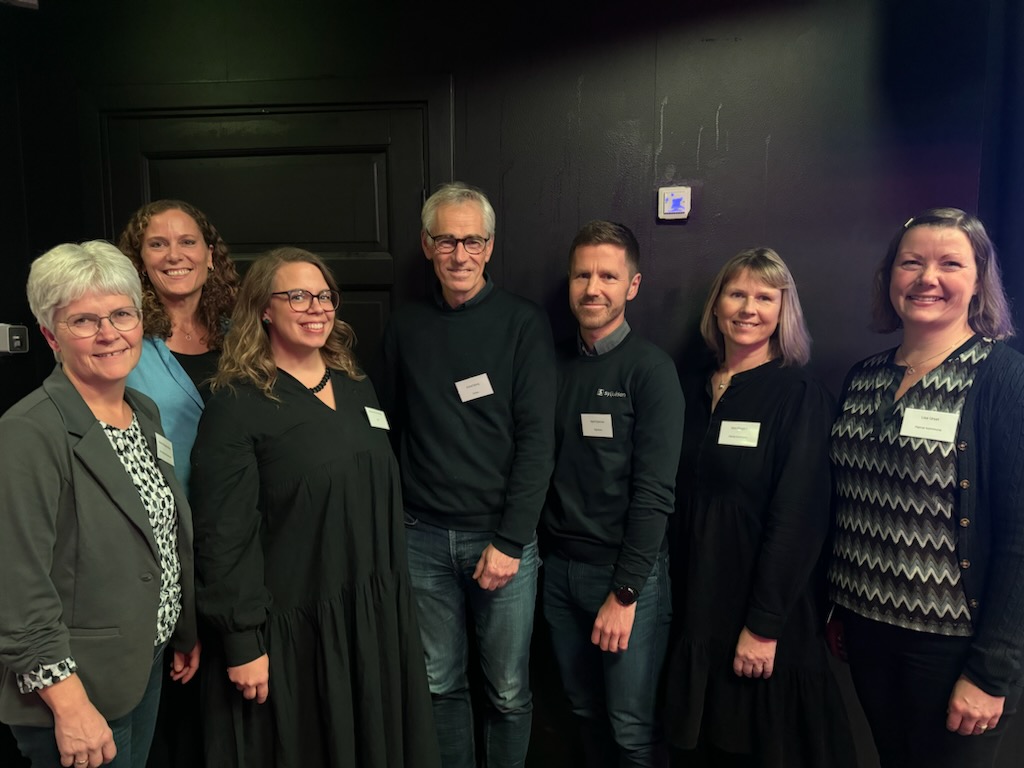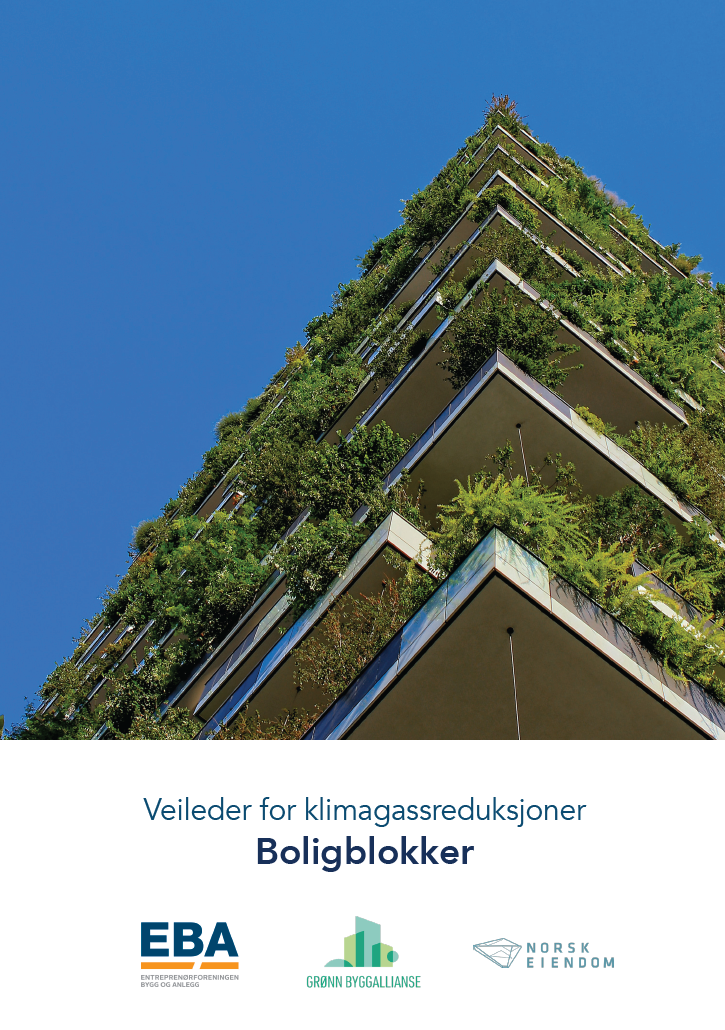Collaboration and dialogue will become more important as the requirements for sustainability in construction projects become more extensive. When the Climate-Friendly Buildings Innlandet project has held meetings and gatherings with players in the industry, the recurring theme has been that “we need a meeting place”. To discuss solutions, opportunities and risks, and share good and bad experiences.
That’s why the project took the initiative for this first professional gathering under the heading “The construction industry of the future in Inland Norway”. On the agenda was knowledge transfer and sharing from processes and construction projects.
Upheaval in the construction industry
The construction industry accounts for 40% of global greenhouse gas emissions and just over 20% nationally, so we all know why emissions need to be reduced. However, there are still many unanswered questions about how, what, who and when. Eivind Selvig from Civitas and the Climate-Friendly Buildings Innlandet project drew a picture of all the ambitions and requirements that the industry must meet in the future. A good mix of expected and planned tightening of requirements in EU regulations and Norwegian regulations.
Meeting the requirements requires methods, knowledge, interdisciplinary collaboration, development and testing of new products and solutions. Suppliers must document the climate and environmental properties of their products and deliveries. Public procurement will set requirements or invite competition for the best deliveries.
– We are facing a paradigm shift throughout the construction industry. The reuse of buildings, building components and materials will become the new normal. We need to look at buildings as a material resource, both when we rehabilitate, rebuild for other uses and when we dismantle entire buildings. In other words, we need to think circularly throughout the process, throughout the building’s lifetime and find solutions that extend its lifetime. We can learn a lot from going back and seeing what and how we did with timber-framed buildings, which are excellent examples of circular solutions with a long lifespan; they can be dismantled, moved and reused,” said Selvig.
Guide for greenhouse gas reductions in buildings
When regulations and methods are constantly changing, it can be difficult to know which measures to prioritize. The Norwegian Association of Building and Construction Contractors (EBA) recommends starting with the measures that cost the least but have the greatest climate impact, which is described in EBA’s guidelines:
Marianne Åvik Bråten, Head of Building and Housing at EBA, gave us an introduction to how the guidelines can be used as a tool when planning a building. Part 1 describes some basic principles of great importance for greenhouse gas emissions that are common to all projects. Part 2 deals with the use of materials in a building project and looks at the most cost-effective measures in relation to possible CO2 reductions when choosing solutions.
– “By going through the guide and assessing the building elements, you can see how you should consider replacing materials to reduce emissions. This is a simplification and cannot be used as a pick list, but it starts the little gray areas when we work on projects,” explained Bråten.
At the same time, she noted that it’s important to look at the big picture: “Some sites may not be suitable for building on. And we need to build durable buildings that will stand up to the future and the climate changes we face, including waterproof basements. At the same time, we need to build in resilience so that we can adapt the buildings and use them for other purposes later. There are many choices to be made, and early involvement of the executing contractor will often be important,” she pointed out.
As a result of more and better products on the market, the EBA is in the process of updating the guide with new CO2 values. The new edition is planned to be launched before Christmas.

Experiences with climate reduction in construction projects
Project manager Kjetil Kjærnes presented the “Stasjonsveien 7-9” project, where Syljuåsen has been both client and contractor. The background was a slightly different call for tenders from Løten municipality, where the order was for a building that could house a medical center in the center of Løten, in return for the municipality providing a long-term lease.
– When you’re a developer, the expected property value in the future is of great importance. That’s why we received a clear recommendation to achieve Breeam certification in this project. But such certifications are expensive and large sums are spent on hired consultants. Is this the way to get the best environmental value for money?” asked Kjærnes.
Kjærnes also highlighted some practical experiences with the weighting of climate in public procurement: “It is entirely possible to weight the environment by setting requirements in the specification, and not in the procurement criteria. Then we think that the environmental goals should be linked directly to CO2 emissions instead of specifying an exact construction method. Can we have competitions on the percentage reduction of greenhouse gas emissions, so that what we achieve beyond the minimum requirement will provide some benefits?” he said.
Public procurement: Stakeholder dialogue is important
The rule of 30% weighting of climate in public procurement was introduced on January 1, 2024. How do you rig these tenders to maximize the environmental impact while ensuring that local and regional bidders can participate in the competition? We invited the municipalities of Hamar and Alvdal to share their experiences.
Hamar Municipality shared experiences from its market dialogue with building and construction contractors and the Association of Mechanical Contractors (MEF). “We wanted to get answers to some important questions: where does the market think there are the most environmental benefits to be gained, and what do they think about our proposed environmental and climate requirements,” said Östgård, sustainability engineer at Hamar Municipality.
In the process, the award criteria from DFØ’s guide were used as a backdrop. “Some of the experiences we made are that the market in Inland Norway is ripe for fossil-free (not emission-free) building and construction sites, and that many are concerned about transport, material use and reuse of masses,” she explained. The plan is to continue the market dialogue, including with waste management companies.
In Alvdal, regional procurement advisor Hanne Maageng Olsen has been involved in the early phase of planning for new care homes, where they want to use climate-friendly materials and at the same time build local expertise. “Anchoring is very important, and we have received a decision from the municipal council that we will move forward with “green building” and that we will look further into possible forms of contracting,” she began.
In October, the municipality invited suppliers to a dialog meeting. One of many suggestions was that the requirements for the number of reference projects should not be too high if local contractors are to take part in the competition. “The participants were very positive about this type of dialogue, and the municipality received good input for further work,” said Maageng Olsen.
Want a permanent meeting place
The conference was rounded off with a Menti survey on usefulness and what thoughts the participants have about establishing a permanent meeting place for “The construction industry of the future in Inland Norway”. In summary, most were very positive, both in terms of form and professional content. An overwhelming majority would like to see two such meeting places a year, and preferably more time to mingle.
The Climate-Friendly Buildings Inland project is following up the input in collaboration with the stakeholders who participated in the planning of the conference: EBA Innlandet, Arkitektforeningen Hedmark og Oppland, Innlandet County Council, Hamar Municipality, Østlandet Gjenvinning and Tema Eiendom.
Project Climate-friendly buildings Innlandet
The aim of the project is to speed up the transition to more climate-friendly construction in the region. Climate-friendly use of materials is central to the project, and knowledge is being disseminated about greenhouse gas calculations/budgets, certification schemes, forms of construction, rehabilitation and reuse.
Duration: February 2023-February 2026
Target group: All players who order or deliver services/products for construction in Inland Norway
Led by: Norwegian Wood Cluster, Civitas and Norconsult
Funded by: Innlandet County Council and Innovation Norway. The state administrator supports the project.
Read more and sign up for newsletters: www.klimavennligebygg.no




